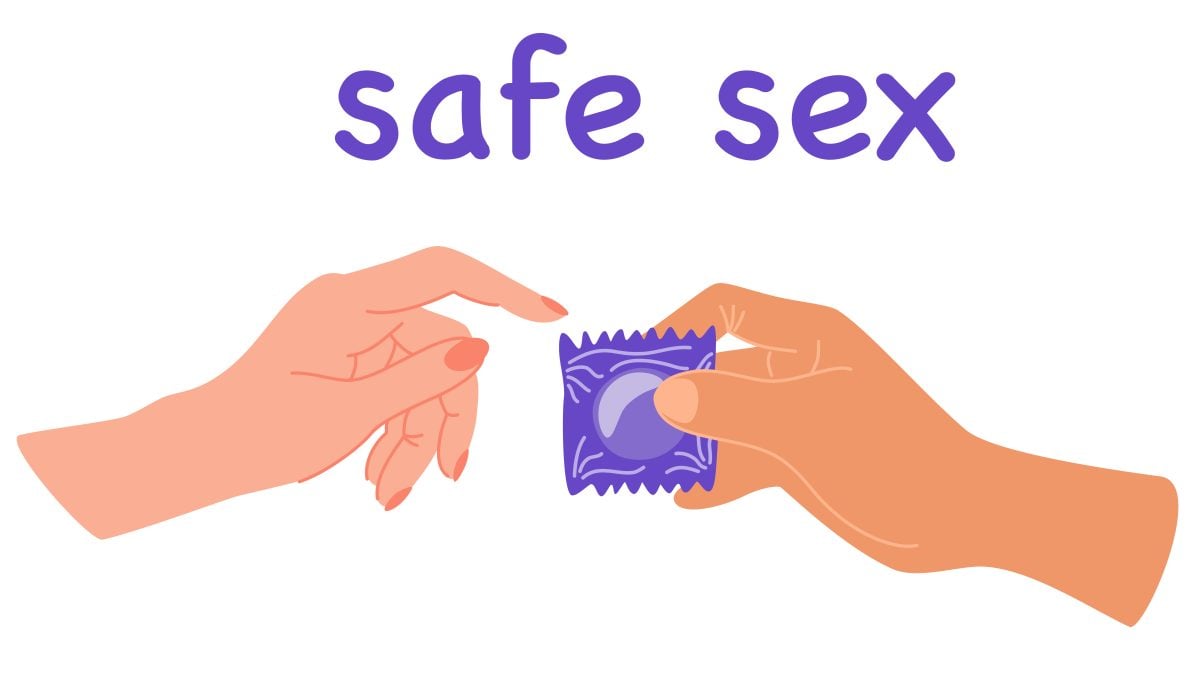Minimizing Risk: One Unprotected Encounter’s Impact on STDs
You may not think much of a single night’s risky choice, yet even one time without protection can change your life. Imagine the shock: what felt like simple fun now puts you at risk for STDs. Recent stats show many have rolled these dice, about 60% had sex with unknown-risk partners, while others chose this path with infected individuals or when their own status was a mystery.
Remember, health pros are just as prone to take such risks despite knowing better; hence everyone should stay alert and protect themselves every chance they get.
Understanding Unprotected Encounter Risks
You should know, the risks from just one time without protection can be big. Listen to these stats: 46% of people have gone without in situations where they weren’t trying for a baby; and not old numbers either 7% did this last year alone. Even when you don’t know if your partner has an STI or not, that didn’t stop 60%, with a fresh 12% taking that gamble recently.
It’s like playing Russian roulette with your health, even pros who should preach safety slip up sometimes. Imagine this: about every two out of five women had sex within three months without thinking ahead.
And think twice before believing “it won’t happen to me” – millions get new STIs yearly . It takes one wrong move, and buddy, those are odds you really want to beat.
STD Transmission in a Single Exposure
When you hook up without a shield, the risk is real. Every time skin touches where it shouldn’t, germs can jump from them to you. In one go, your chances of catching an STD aren’t zero.
Studies tell us that lots don’t get the right rundown in school about staying safe – no shock why some end up sick. With gaps like these worldwide, Canada’s classrooms included, misunderstandings spread fast as disease itself. So here’s what counts: Use protection every single chance you get if keeping clean matters to you because even once can be too many times to gamble with your health.
Unprotected Oral Encounters and STD Probability
When you don’t use protection during sex, the chance of catching HIV or another STD goes up. A study found that 38% of women had unprotected anal sex last year. Those who did were often older, homeless, drank a lot or used drugs; some even traded sex for these things.
The risk of contracting a sexually transmitted disease (STD) from unprotected oral sex varies based on several factors including the type of STD, the infection status of the partner, and the presence of any cuts or sores in the mouth. Here’s how the risk breaks down for common STDs:
- Gonorrhea often infects the throat through oral sex, occurring when a person comes into contact with the genital secretions of an infected partner.
- Chlamydia transmission through oral sex is less common compared to gonorrhea but still possible.
- Herpes Simplex Virus (HSV-1 and HSV-2) can be transmitted if there is oral contact with active herpes sores or even through asymptomatic viral shedding. HSV-1, typically associated with oral herpes, can cause genital herpes when transmitted through oral-genital contact.
- Human Papillomavirus (HPV) can lead to infections of the throat, warts, and even cancers of the oropharynx. It is a significant concern due to its high transmission rate through sexual contact, including oral.
- Syphilis spreads through direct contact with a syphilitic sore, which can appear on the mouth, lips, genitals, or anus during oral sex.
- HIV poses a very low risk through oral sex, but the risk increases if there are cuts or sores in the mouth or exposure to menstrual blood.
Using barriers such as condoms or dental dams can effectively reduce the risk of STDs during oral sex. Regular screening and open communication about health status with partners are crucial for prevention.
Unprotected Anal Encounters and STD Probability
Anal without a condom is riskier than no condom vaginal intercourse especially for women because it can tear delicate skin inside and let infections in easier. The odds of getting HIV from one act of this kind are much higher, over five times compared to traditional ways. So if you’re not using condoms with new partners or many people in just one year, your risk shoots up fast.
Evaluating Your Risk After Unprotected Sex
If you just had sex without a condom or other barrier, it’s crucial to know your next steps. First, recognize that each act can raise the chance of STDs. Your actions right now matter, a quick response limits risks.
Get tested, some clinics provide results fast; acting early is key. Remember, symptoms aren’t always obvious; an infected person might feel fine but still pass on disease. Use protection if you’re not ready for abstinence, it’s vital for safety against HIV and STIs alike.
Practice saying no when needed, it helps avoid risk in future moments. Learn from this time: gather facts about prevention and stay informed on sexual health topics.
Factors Influencing STD Infection Rates
When you hook up without protection, your STD risk jumps. Some groups see more infections than others. Take men who get busy with other men (MSM).
They’re in a tough spot when it comes to sexual health threats. Research tells us that nearly one in four MSM will have an STD sign over four years. That’s about 20 cases for every hundred dudes each year.
Globally, the picture is as clear as day; HIV and other bugs like chlamydia are on the rise among these guys, some silently spreading faster than those causing symptoms. In Asia, individuals are digging through heaps of data but still need clarity on how best to shield MSM from STIs there.
More silent diseases making waves, the kind you don’t feel or see until much later, and this isn’t just happening close by, it’s all over Europe too where silent infections soared way above those we can spot early on. Bottom line: If you have a safe one night stand now you dodge bigger troubles down the road.
Reducing Future Sexual Health Hazards
To cut down on sexual health risks from a one time unprotected encounter, one must know the facts. Bacterial STDs like syphilis can be cured with antibiotics; however, this won’t work for viral infections such as hepatitis B or HIV. Many people carry these diseases without any signs, this silent spread is a real problem.
To stay safe during sex, use barriers like condoms and dental dams every time you’re with someone new or if your partners change often. If there’s a chance of getting HIV, ask about PrEP, a drug that keeps the virus away, and get vaccinated against HPV and hepatitis B to stop those viruses before they start. Get checked every three months if you’re sexually active with different partners.
Seeking Medical Advice Post-Exposure
After you’ve had even a single unprotected encounter, get tested right away. They will guide you on what tests might be needed and discuss possible treatments or next steps with no delay. It’s vital not to wait; some infections can show up within days, while others take longer.
You should get checked even if there are no clear signs of trouble yet because many STDs don’t make people feel sick right away but can still harm your body over time. Trust in professional advice for peace of mind and health safety after such events – it’s the best move forward.
Bearing in mind the potential consequences of just one unprotected moment, prioritizing your well-being is vital. Without proper protection, that single instance can lead to an STD, affecting health and peace of mind. Regular testing with STDCheck helps track your sexual health status discreetly and accurately; it’s a simple step toward taking control back into your hands.
Medically Reviewed by Kaci Durbin, MD, MBA, FACOG on April 11, 2024
Secure and Confidential
STD testing services
The fastest results possbile - available in 1 to 2 days

Tagged
Categorized As
Author: STD Check Editorial Team
At STDCheck.com, we go to great lengths to ensure quality content. We’re using our own collection of data. It is not bought or made up for “click-bait” purposes. We don’t entice traffic with cheesy graphics or raunchy headlines. Our information is to promote STD testing, educate people, let go of social stigmas, and bring awareness. We also provide a completely confidential atmosphere through private testing. When we produce an article, it is fact-based. We check it with medical advisors that approve it. Our staff consists of doctors and other medical professionals who peer review the content we make available on STDCheck.com. From all over the world, we have sourced the best and the brightest content developers, including medical professionals, marketing engineers, data scientists, content specialists, and media relations.




